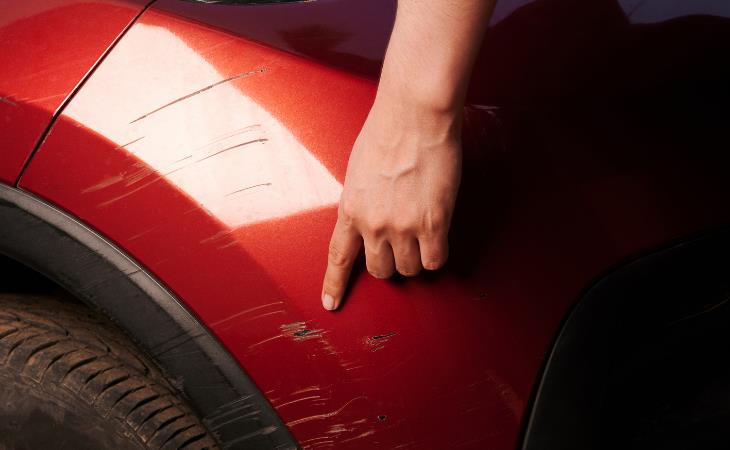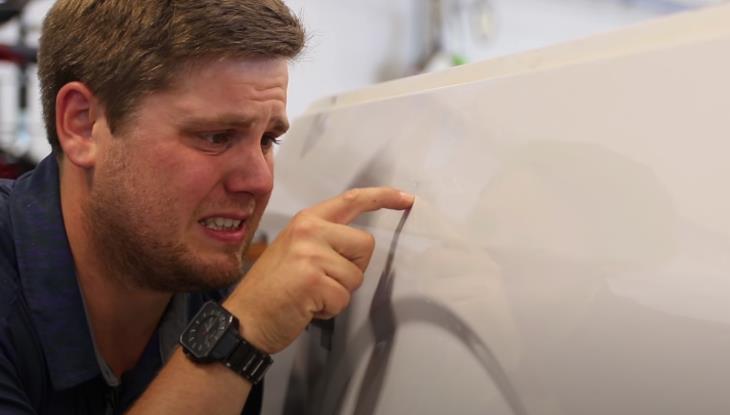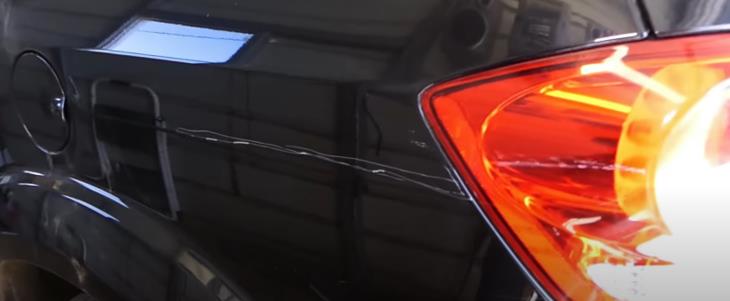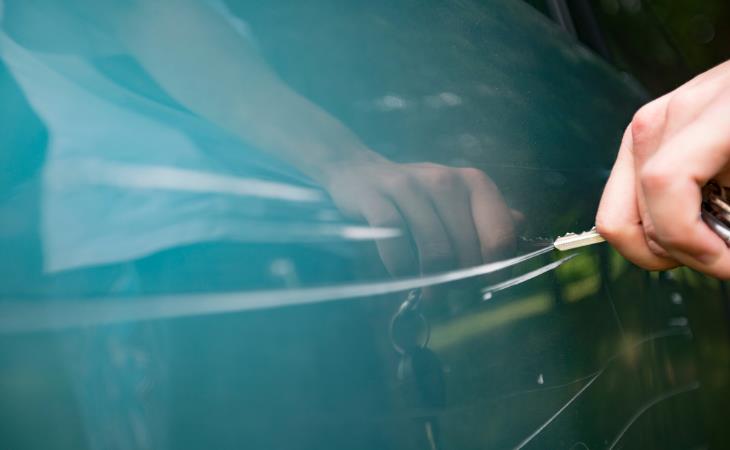

Surface-level car scratches refer to minor abrasions or marks on the vehicle's exterior paint that typically do not penetrate the clear coat. In most cases, these scratches are shallow and affect only the top layer of paint. They are most commonly caused by fingernails, brushes, or mild contact with objects.
Surface-level scratches may not harm the structural integrity of the paint or reveal the underlying metal, but they might detract from the vehicle's appearance and reduce its resale value if not corrected. These scratches appear as small lines or marks on the paint's surface, but they can still be visible, particularly on darker-colored automobiles or in harsh lighting.
Depending on the severity of the damage, there are several ways to repair surface-level car scratches. One common method is to use a scratch remover or rubbing compound made specifically for vehicle paint. These treatments work by gently abrading the paint surface, eliminating the scratch, and blending it into the surrounding region. Polishing compounds or buffing equipment can be used to gradually reduce the appearance of surface scratches. For deeper scratches that cannot be easily buffed out, use touch-up paint or paint pens matched to the vehicle's color to fill in the damage and restore the paint's appearance.
Professional detailing services may provide more advanced treatments, such as wet sanding or paint correction, to handle deeper scratches and restore the vehicle's finish to like-new quality.

These are damages to the protective clear coat layer on the car's paint surface. This clear coat acts as a barrier, protecting the underlying paint layers from environmental contaminants and debris. When scratches form, they usually appear as shallow marks on the surface, which might compromise the purity and sheen of the paint. These scratches can result from various factors, such as improper washing techniques, contact with abrasive materials, or minor impacts. Clear-coat scratches may not penetrate deeply into the paint layers; however, they can still detract from the car's appearance, particularly in areas with direct sunlight exposure.
How to fix it:
Start by cleaning the affected area with gentle car wash soap and water to remove any dirt or debris. Next, determine the severity of the scratches; if they are shallow and just harm the clear coat, try buffing them out using a high-quality automotive polishing compound and a soft microfiber cloth. Apply a tiny amount of polishing compound on the cloth and gently rub it into the scratched area in a circular motion. Continue buffing until the scratches start to vanish, then remove any excess compound with a clean towel.
Finally, apply a coat of auto wax to the treated area to restore shine and further preserve the clear coat. Deeper scratches that pierce the clear coat and expose the underlying paint layers can require a professional repair.
Related: Can’t Fit Anything in the Car? 11 Clever Car Cleaning Tips


Keyed car scratches are a frustrating and unsightly form of vehicular damage caused by deliberate vandalism or accidental contact with sharp objects.These scratches usually appear as long, shallow markings on the vehicle's surface that continue through the paint and occasionally reach the underlying metal. Keyed car scratches can also lead to rust and corrosion if left untreated. Moreover, they can diminish the vehicle's resale value and pose a significant inconvenience to the owner.
How to fix it:
Minor scratches that only penetrate the clear coat or top layer of paint can be buffed out using polishing compounds or scratch repair kits. However, severe scratches that expose the primer or metal need more intensive treatment. These scratches may involve sanding the affected area, applying touch-up paint to match the vehicle's color, and then buffing and polishing the repaired area to blend it in with the surrounding paint.
If the scratches are too serious or widespread for DIY restoration, professional assistance from an auto body shop or detailing service may be required to produce the best results and restore the vehicle's appearance. Regular maintenance and timely repair of keyed automobile scratches can help preserve the car's appearance and avoid future damage to the paint.
Related: These Tips Will Help You Keep Your Car In Order

These scratches happen when your car's body comes into contact with another painted object, causing paint to transfer onto the car's surface. These scratches usually impact the top layer of paint, leaving behind unsightly marks. Even though the scratches appear severe, they are usually easier to repair than you might expect.
How to fix it:
To begin with, thoroughly clean the affected area using a mild soap and water solution to remove any dirt and debris. Then, determine the depth of the scratches to estimate the extent of the damage. If the scratches are shallow and have not penetrated the clear coat, you can buff them away using a fine-grit polishing compound and a microfiber cloth. Simply apply the polishing compound to the scratched area and gently rub it in a circular motion until the scratches disappear.
However, if the scratches are significant enough to penetrate the clear coat, you may need to use a matching vehicle touch-up paint kit to touch up the paint. Carefully follow the instructions provided by the manufacturer to ensure that the paint is applied correctly and blends well with the surrounding paint.